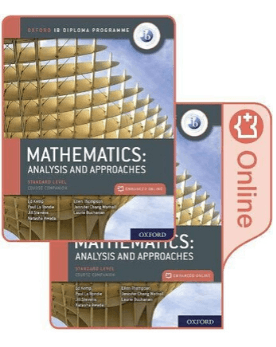IB Mathematics: analysis and approaches, SL Course Companion
Regular price
$115.00
Sale price
$115.00
Regular price
Unit price

IB Mathematics: analysis and approaches, SL Course Companion
Product description
Digital Sample
Featuring a wealth of digital content, this concept-based Print and Enhanced Online Course Book Pack has been developed in cooperation with the IB to provide the most comprehensive support for the new DP Mathematics: analysis and approaches SL syllabus, for first teaching in September 2019.
Features
- Address all aspects of the new DP Mathematics: analysis and approaches SL syllabus via an Enhanced Online Course Book Pack - made up of one full-colour, print textbook and one online textbook, including extensive teacher notes
- Ensure learners are ready to tackle each topic with targeted 'Prior Knowledge' worksheets, linked to 'Before You Start' summaries and exercises at the start of every chapter
- Deliver in-depth coverage of all topics through clear explanations and worked solutions, animated worked examples, differentiated exercises and worksheets, with answers provided
- Adopt a concept-based approach with conceptual lenses and microconcepts woven into every chapter, plus rich investigations that integrate factual and conceptual questions - leading to meaningful, content-specific conceptual understanding
- Deepen mathematical understanding via inquiry-based tasks that relate to the content of each chapter, 'international mindedness' features, regular links to Theory of Knowledge, and activities that target ATL skills
- Support students' development of a mathematical toolkit, as required by the new syllabus, with modelling and investigation activities presented in each chapter, including prompts for reflection, and suggestions for further study
- Thoroughly prepare students for IB assessment via in-depth coverage of course content, overviews of all requirements, exam-style practice questions and papers, and a full chapter supporting the new mathematical exploration (IA)
- Includes support for the most popular Graphic Display Calculator models
IMPORTANT: For e-book only purchases: E-books, Codes, Licenses and Registrations are Non-Refundable.
Please ensure the item you are purchasing is what you need prior to finishing your check out. If you’re unsure, email us first at cs@myibsource.com
All e-books are NOT PDF's or downloads, they are web-based E-books, codes, licenses or registrations to be registered and used / viewed online.
Electronic resources are not instant. They can take 24-48 hours to set up and / or send.




